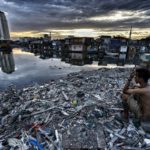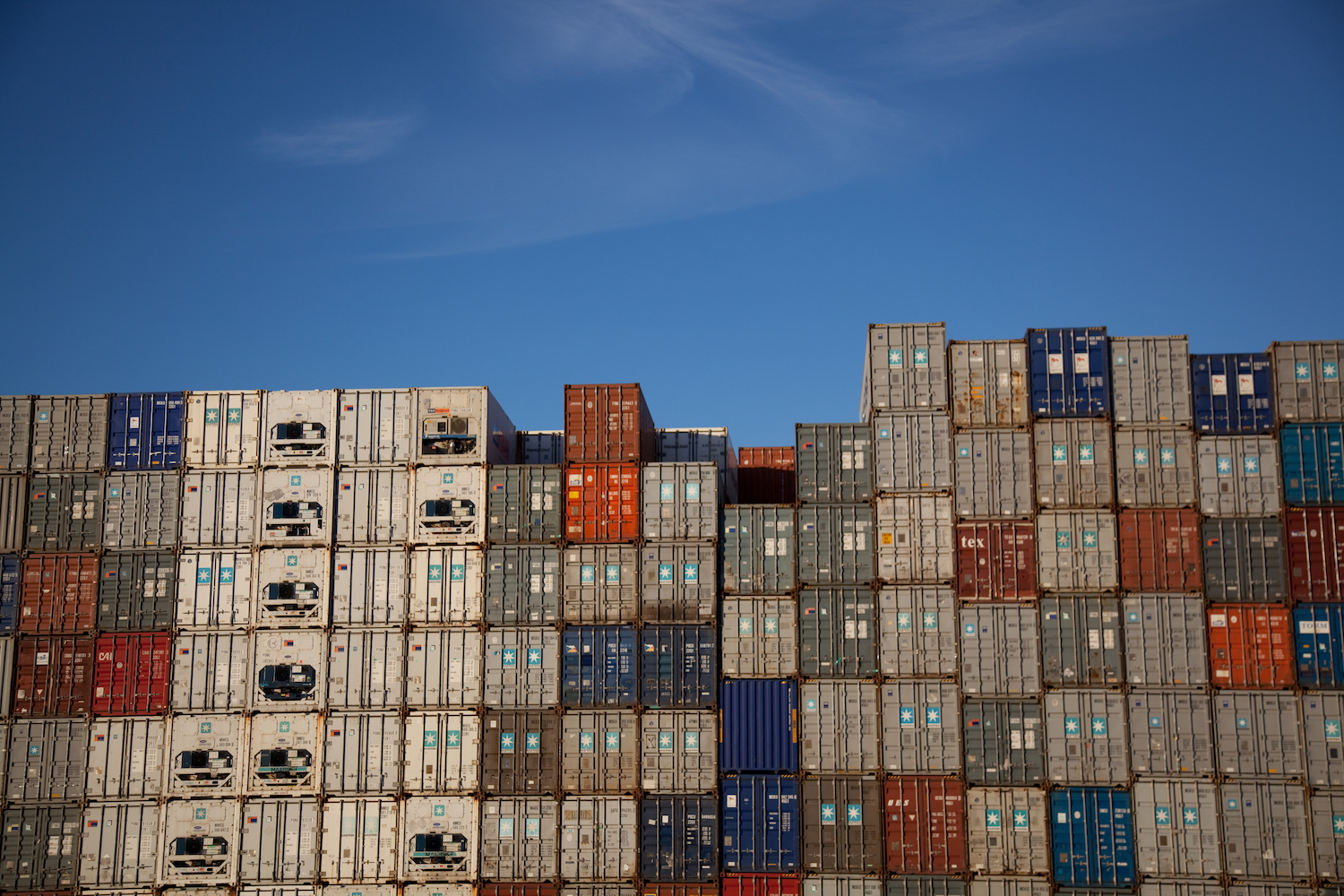The effects of the climate crisis on our ecosystems becoming terrifyingly apparent by the day. A fundamental change in our economy and energy sector is required if we want to achieve the goal of restricting temperature increase to only 1.5°C before 2050. This particularly important in Asia, which has the largest share of the world’s population and energy demand.
According to the 2019 Global Peace Index by the IEP, Asian-Pacific nations face some of the steepest risks of climate hazards. The Philippines will be worst off, followed by Japan.
Some Asian countries have set relatively high targets for renewable energy capacity while some have lower targets. How are they really faring with their climate policies?
Using official data and sources, let’s evaluate 10 of them.
The High Target Countries
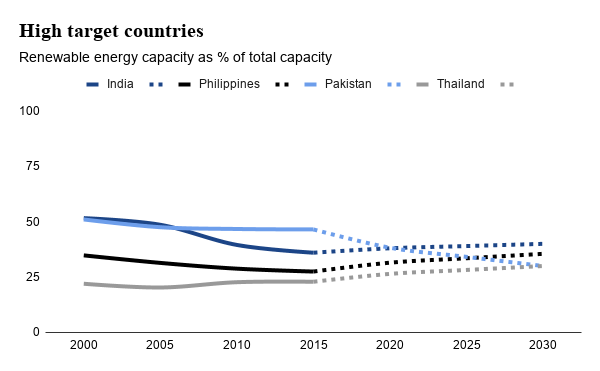
India
As the country gains more power in international markets, so does its energy demand and consequently its emissions have also reached new levels. The most obvious sign of this trend is the peak in air pollution in India, which is the worst in the world.. The country’s NDC targets of 40% non-fossil fuel share of power source is compatible with the 2°C goal according to Climate Action Tracker. India’s has already invested in renewables such as solar power (outpacing coal investments), hydropower and wind. But it is still a big importer of oil and both producer and importer of coal. As population and energy demand increase, the Indian government has the means to make the most of solar and wind resources as the costs for building installations are among the cheapest in the world.
Philippines
The Philippine NDC targets promise a 70% cut of emissions, but just like Indonesia that promise is conditional on receiving international support, and a transition to a sustainable clean energy-driven economy. But the country is unlikely to meet these targets as coal and oil make up a big chunk of import and source for power and transport in the Philippines already. Additionally, the government plans to boost the construction of coal power plants. It seems that being the country estimated to pay the highest price from the climate crisis is not enough to put pressure on the government act.
Pakistan
As one of the lowest income countries, Pakistan faces many challenges in reaching the Paris Agreement goals. Pakistan’s NDCs include a commitment to reduce emissions by 20% compared to the business-as-usual (BAU) projections, but only on the condition that it will receive international aid and grants. The problem is that Pakistan cannot enjoy the cheap prices that India can. As the population and consequently the demand for energy increases, Pakistan’s most viable option is fossil fuels, mostly oil and gas, but coal power plants are also expanding. This trend could not be further away from the goals of the Paris Agreement.
Thailand
Thailand is plagued by a heavy reliance on fossil fuels and natural gases for energy and electricity. The country has committed to increase the percentage of renewables to meet the targets set by the NDC. But in lieu of a full transition to renewables, the government’s current goal seems to be a diversification of energy sources, with plans to still increase the coal power plants. Plans that would impair the quick decarbonisation goals pleaded to the Paris Agreement.
The Middle Target Countries
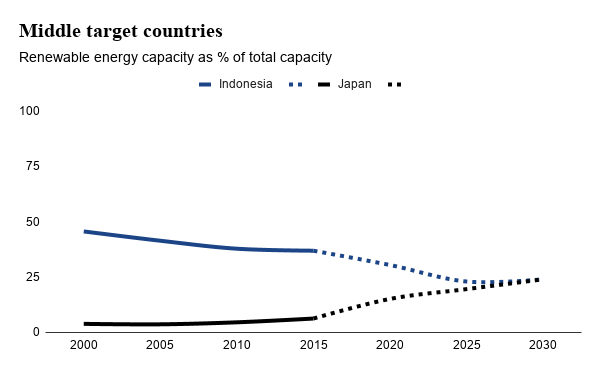
Indonesia
Indonesia has one of the biggest reserves of coal in the world and is the largest coal exporter according to IEA. On the condition of receiving international support, the country has pledged to increase renewable energy sources and cut up to 41% of its emissions compared to a BAU level. This is not a very ambitious target as it focuses mostly on forestry and other land use (FOLU) sector. Unfortunately, in this sector it looks like money is more important than protecting the forests for Indonesia. The country has burned significant portions of its rainforest to make land for palm oil.
Japan
Policy projections for Japan do not give much cause for optimism either. The Fukushima disaster (which effects, like water contamination, are still ongoing today), shook the heavy nuclear-relying power sector and led to an increase in the use of fossil fuels and higher CO2 emissions. In the NDC submitted to the Paris Agreement, the government promised to cut emissions by 26% by 2030 (compared to 2013), invest in eco-friendly transportation, and to diversify power sourcing. There is an actual effort to make renewables claim a 24% share of the energy mix (especially with Japan becoming a leading expert in floating solar power), followed by nuclear power (22%). Unfortunately, complete energy decarbonisation seems quite far away for Japan as it is a big importer of fossil fuels, and the target for coal reduction is set too low, only a 26% reduction by 2030.
The Low Target Countries
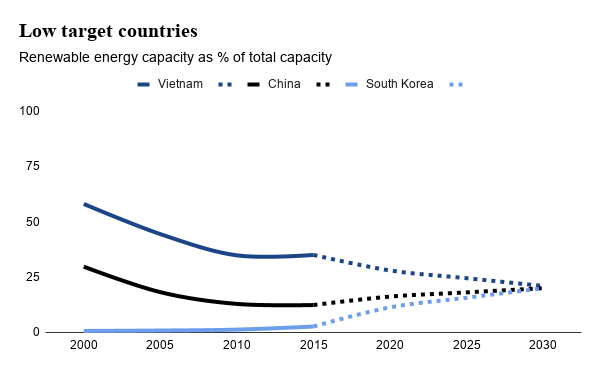
Vietnam
Like Indonesia, Vietnam has coal reserves of similar size, but due to an increase in energy demand it has also started to import it. Coal makes up more than 40% of energy use in the industry sector, and coal plant expansion is also being planned. Interestingly, the government still targets a 25% emission reduction compared to BAU level, perhaps counting on international support instead of its own efforts to meet that target. As a member of the Climate Vulnerable Forum, Vietnam is also planning an acceleration towards renewable energy (mainly solar and wind) for power generation that should reach 30% by 2030, and supposedly become the country’s main source of energy in the future.
China
China is one of the more controversial countries when it comes to environment policy. In fact, the Chinese government is investing in both renewables and coal plants. It is the biggest importer of coal, oil and natural gases according to International Energy Agency (IAE) statistics, and is constructing new nuclear power plants. The country’s NDC targets of increasing forests and non-fossil energy share by 20% do not seem sufficient to stay off even the 2°C scenario. In general, CO2 emissions are still rapidly increasing (having big implications on the air quality of neighbouring countries) and fossil fuels remain the main source of energy. I this is not all China’s fault however, because its emissions per GDP and consumption-based emissions are low compared to Western countries, even though those countries have lower absolute levels of emissions.
South Korea
In its Nationally Determined Contribution (NDC) targets, South Korea pledges an economy-wide cut of around 30% emissions compared to the business-as-usual level by 2030. South Korea hopes to achieve this goal by implementing an emission-trading system, stronger investment in renewables, green buildings and public transportation.
But how can South Korea meet the Paris Agreement targets when is still one of the biggest importers of fossil fuels, while policy projections show that its plans will not be enough to stay under the 1.5°C limit? It seems almost impossible that the country will reach the promised goals when pollution makes it a struggle to just breathe most time of the year. It’s not just due to China. Also, the amount of single-use plastic used in South Korea is the highest in the world. Can someone explain why one single apple must be wrapped in plastic? Or a banana? It comes with its own wrapper!

Bhutan is the only country in the world that have the potential to become carbon negative. (Photo: South China Morning Post)
Bhut at last, some good news: Bhutan
The tiny country of Bhutan (slightly smaller than Switzerland), nestled among the Himalayan peaks is the only carbon-negative country in the world, meaning it absorbs more CO2 than it emits. Sure, this achievement was possible thanks to its size, forest density and hydropower. But the fact that the country prioritizes Gross National Happiness instead of Gross Domestic Product, makes the conservation of its ecosystem a focal priority. It will be interesting to see how Bhutan will face the challenges that its growing population and economic development will inevitably bring, while keeping its promise to maintain the carbon-negative status and cut the transportation sector emissions.
Clearly, there is still a lot to be done and the implementation of the goals set requires much stronger international effort. A developing country, especially a least-developed country (LDC), does not have the economic means or the technology necessary to achieve the decarbonisation targets in full.
Not all governments believe that the threat of the climate crisis is as dire as scientists believe it to be. That is alarming. If the international community as a whole does not act in its full capacity, we will all suffer the consequences of the climate crisis. Economic prosperity and sustainability are not mutually exclusive, they are the same thing. The alternative is catastrophe.
Eleonora Fasan is a graduate student at Yonsei Graduate School of International Studies. She to came to Korea all the way from Italy and she is a proud European. She has previously written for NOVAsia.
- “I Love My Body”: Hwasa and Female Empowerment in K-Pop and Korean Society - May 6, 2025
- English Fever in South Korea - February 24, 2025
- South Korea’s Medical School Expansion – Cure Worse than the Disease? - October 20, 2024


